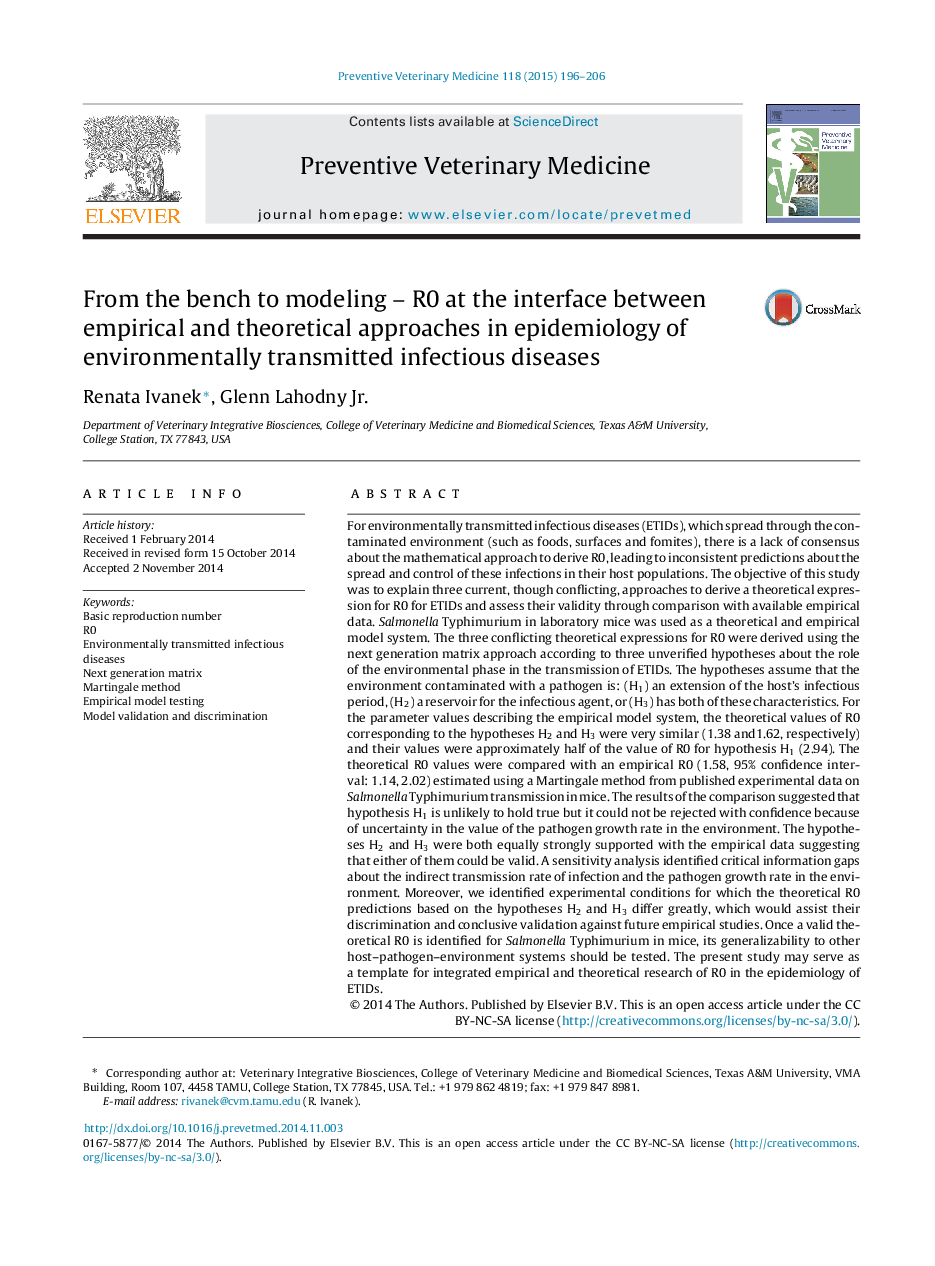| کد مقاله | کد نشریه | سال انتشار | مقاله انگلیسی | نسخه تمام متن |
|---|---|---|---|---|
| 5793294 | 1554172 | 2015 | 11 صفحه PDF | دانلود رایگان |

For environmentally transmitted infectious diseases (ETIDs), which spread through the contaminated environment (such as foods, surfaces and fomites), there is a lack of consensus about the mathematical approach to derive R0, leading to inconsistent predictions about the spread and control of these infections in their host populations. The objective of this study was to explain three current, though conflicting, approaches to derive a theoretical expression for R0 for ETIDs and assess their validity through comparison with available empirical data. Salmonella Typhimurium in laboratory mice was used as a theoretical and empirical model system. The three conflicting theoretical expressions for R0 were derived using the next generation matrix approach according to three unverified hypotheses about the role of the environmental phase in the transmission of ETIDs. The hypotheses assume that the environment contaminated with a pathogen is: (H1) an extension of the host's infectious period, (H2) a reservoir for the infectious agent, or (H3) has both of these characteristics. For the parameter values describing the empirical model system, the theoretical values of R0 corresponding to the hypotheses H2 and H3 were very similar (1.38 and1.62, respectively) and their values were approximately half of the value of R0 for hypothesis H1 (2.94). The theoretical R0 values were compared with an empirical R0 (1.58, 95% confidence interval: 1.14, 2.02) estimated using a Martingale method from published experimental data on Salmonella Typhimurium transmission in mice. The results of the comparison suggested that hypothesis H1 is unlikely to hold true but it could not be rejected with confidence because of uncertainty in the value of the pathogen growth rate in the environment. The hypotheses H2 and H3 were both equally strongly supported with the empirical data suggesting that either of them could be valid. A sensitivity analysis identified critical information gaps about the indirect transmission rate of infection and the pathogen growth rate in the environment. Moreover, we identified experimental conditions for which the theoretical R0 predictions based on the hypotheses H2 and H3 differ greatly, which would assist their discrimination and conclusive validation against future empirical studies. Once a valid theoretical R0 is identified for Salmonella Typhimurium in mice, its generalizability to other host-pathogen-environment systems should be tested. The present study may serve as a template for integrated empirical and theoretical research of R0 in the epidemiology of ETIDs.
Journal: Preventive Veterinary Medicine - Volume 118, Issues 2â3, 1 February 2015, Pages 196-206